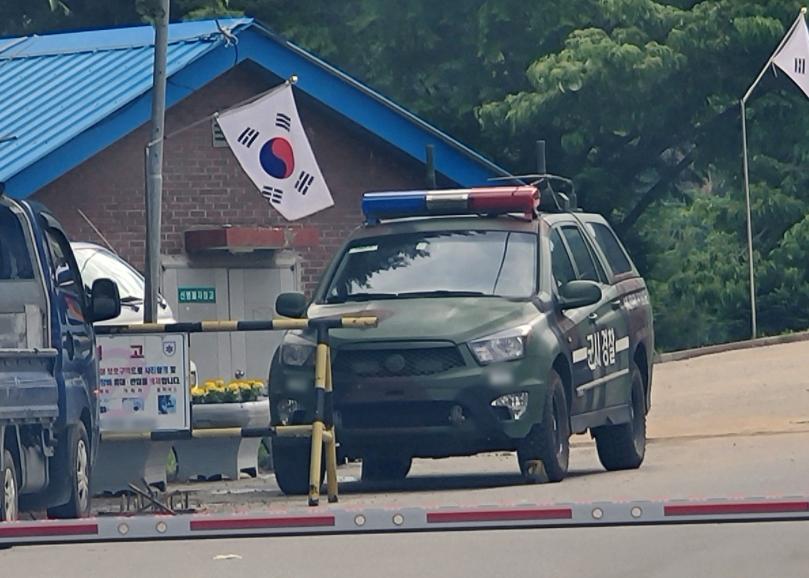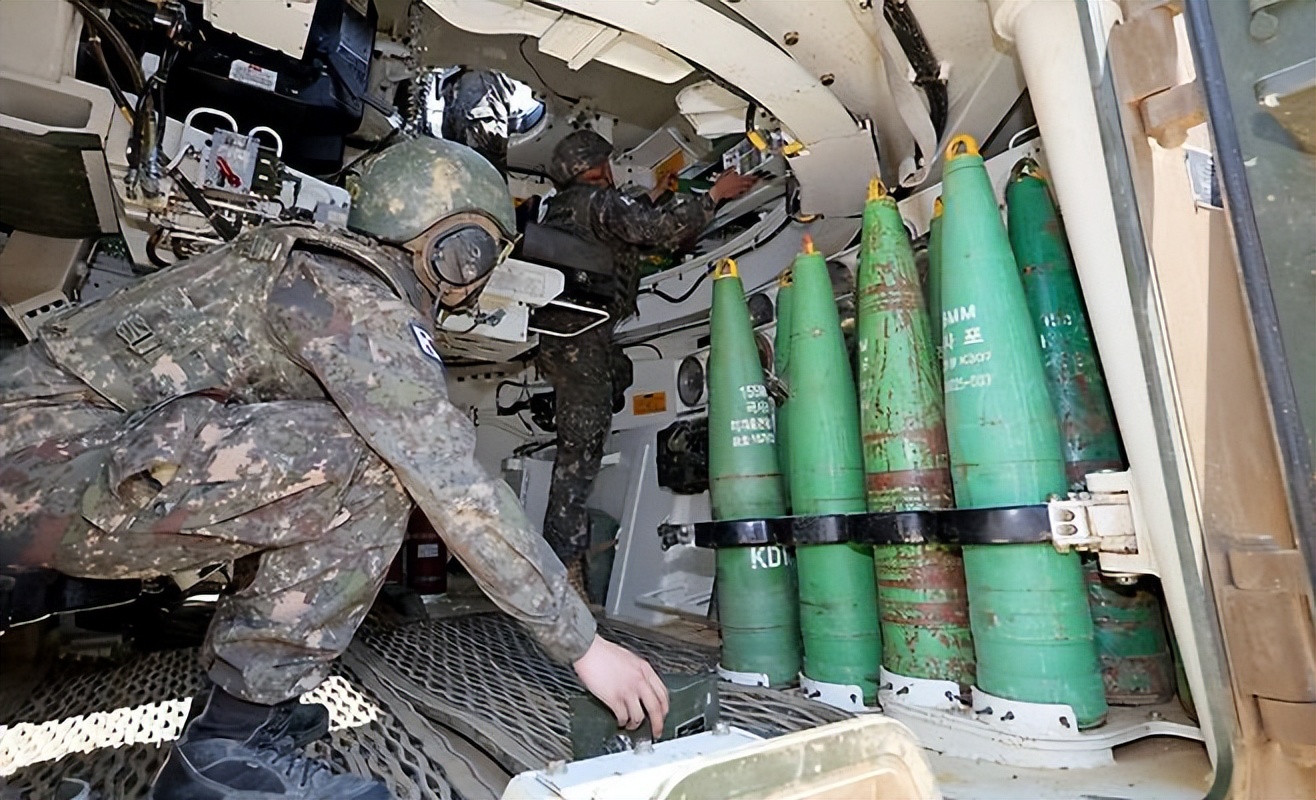If the Korean army is reported separately in this era, it will definitely not be because of its combat power. After all, a country that does not even have the power to command during war is not much stronger;

But why do we talk about it again today?
That's because there was an accident in the army again and again! And it's not just one...
According to Korean media reports, a major accident occurred during training in a certain artillery unit of the Paju Army in South Korea on the afternoon of the 10th. Among the 12 people participating in the training, 10 were injured in the accident, and 3 of them were seriously injured.
The following are the details of the accident announced by the South Korean Army:
At around 3:24 pm on Wednesday, the K9 self-propelled howitzer artillery unit located in Akageng, Paju City, Gyeonggi Province suffered several simulated shell explosions during training.

Military sources said: These simulated bombs were originally used as "non-shooting training" exercise bombs for this training. When the explosion occurred, soldiers were inspecting these simulated shells. There were 12 soldiers inspected. After the explosion, 10 people were affected (5 of the 10 people, 5 soldiers), and 1 of them and 2 soldiers had serious burns on their arms and thighs.
These injured are currently receiving treatment in the Capital Hospital and are not in danger of life.
The "simulated shell" mentioned in this accident is actually not a real shell, and even the appearance is completely different;
This simulated bomb has a diameter of 17.5 mm, a length of 53.3 mm, a weight of only about 10 grams, and contains 3 grams of explosives; its real purpose is to provide soldiers with a "special effect ammunition" similar to the sound and smoke generated by real shell firing during non-live-fire shooting training;


The simulated bomb is usually 24 rounds installed on a disc, and the disk is fixed at the muzzle of the K9 self-propelled howitzer. When the soldier presses the switch, he will fire one at a time through the electric signal. Then the simulated bomb will make a loud noise and produce smoke, which will allow the soldiers to familiarize themselves with the self-propelled howitzer firing program without firing live ammunition, and personally experience the environment after the shell is fired.
Theoretically, this thing cannot hurt people at all, but it is estimated that this accident was triggered by 24 simulated bombs at one time, otherwise such a serious accident would not have occurred.
After the accident, South Korea's National Forces MP and member of the National Defense Committee, Yoo Yong-won, said on his social media:
These ammunitions usually only explode when the electrical signal is applied, but if the simulated bomb is severely damp or exposed to high temperature for a long time, it is easy to cause explosions. Therefore, soldiers must strictly follow the procedures during operation. It is precisely because the simulated bombs pose great risks that the military has issued an order to suspend use because it is worried about an accident. But for some reason, this simulated bomb has been re-activated again.


The Korean Army's reply to this is: Not clear! We don't know if this simulated bomb has had a command to pause and when it will be restored.
The South Korean military has begun to investigate the cause of the accident.
The above is the basic information about the accident in the South Korean K9 self-propelled howitzer troops, but the matter is not over yet. If it is just this small accident, of course it is not worth mentioning. What else will happen next!
On the day when the K9 howitzer simulates the bomb accident, a reserve officer exploded while training a detonator with a Claymore landmine (which we commonly call "Broad Sword Thunder").

Note that it is the detonator explosion, not the Claymore mine explosion. If it is really the mine explosion, then all the training personnel present will probably have to be reimbursed on the spot.
The detonator that exploded in this accident was a training detonator with a length of 60 mm and a diameter of 6.5 mm, and its power was not too great.
After the detonator explosion, a instructor and 6 prepared personnel at the scene were slightly injured, and they were rushed to a nearby hospital for examination. Fortunately, the detonator was not very powerful, and the 7 people were not seriously injured after systematic examination and treatment.

Two not-so-big accidents occurred on the same day, and they were both during training, so this thing is so unpleasant;
In response to these two accidents, the South Korean military believes that accidents occurring during training (rather than mechanical failures) are usually related to loose military discipline. Defense Minister Anguiber specially convened a meeting of the main commanders in response to the successive military accidents and instructed that the bureaucracy and loose military discipline in the army must be actively resolved. Anguiber once again told the Army and Air Force Chiefs of Staff that day: It is necessary to get rid of the inertial thinking that certain accidents are just small matters and are not worth mentioning.
South Korean President Lee Jae-ming said on social media after learning of an accident in the Paju army:
"The accident must be thoroughly investigated, the cause must be identified, and precautions must be formulated to ensure that similar incidents will never occur again, so as to protect those who have contributed their entirety to the country."

In fact, this kind of small accident is common in the Korean army. Major accidents in the Korean army have also occurred frequently since this year, such as:
A Israeli-made Heron drone hit a helicopter when landing at the Yangju Army Base Airport in Gyeonggi Province. After the impact, both aircraft were scrapped in explosions and fires, with direct economic losses of about 23 billion won;
It was still in March, during joint training of the South Korean and US Air Force, a South Korean Air Force KF-16 fighter jet entered the wrong coordinates during training in Bocheon City, Gyeonggi Province, and directly dropped 4 MK-82 bombs into residential areas. After investigation, the explosion caused 19 civilians and 12 soldiers to be injured and 152 buildings were damaged. If it should be said, the power of this bomb is indeed not small;

In April, a South Korean Air Force KA-1 light attack aircraft directly lost the two machine gun pods and two empty fuel tanks mounted under its belly during night flight training over Pyeongchang, about 125 kilometers east of Seoul. Later, after careful search by hundreds of people, they only found one machine gun pod, and the rest of the things were included in the missing list;
In May, Yangju City, Gyeonggi Province, a soldier accidentally caused the K-6 heavy machine gun to fire while inspecting a gun;
What is more tragic is that the muzzle of the heavy machine gun that was fired was aimed at the north, which means that the bullets that were fired hit the opposite side; after the incident, the South Korean army urgently used a loudspeaker to shout to the North side and informed of the relevant situation to avoid the escalation of the situation due to misjudgment.
Look at these accidents in the Korean army, whether it is frequency or weirdness, it is very rare in the army of any other country in the world.














